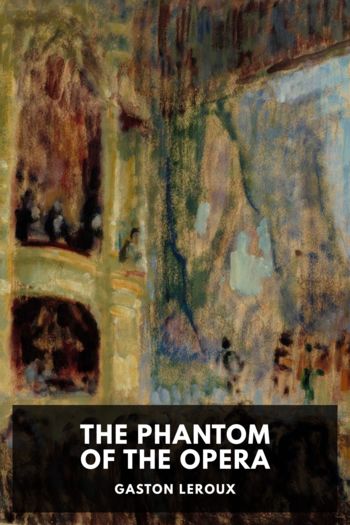The Banker Who Crushed His Diamonds Furquan Moharkan (books to read in your 20s .TXT) 📖

- Author: Furquan Moharkan
Book online «The Banker Who Crushed His Diamonds Furquan Moharkan (books to read in your 20s .TXT) 📖». Author Furquan Moharkan
Before we proceed, we have to keep in mind the family tree, which is very important to understand the dynamics at YES Bank. Bindu Rana Kapoor and Madhu Kapur are two sisters. Bindu is married to Rana Kapoor, while Madhu was married to the late Ashok Kapur. Both men were promoters of YES Bank. Shagun Gogia Kapur and Gaurav Kapur are Madhu and Ashok’s children. On the other hand, Radha Kapoor Khanna, Rakhee Kapoor Tandon and Roshini Kapoor are Bindu and Rana’s daughters.
THE BIRTH OF YES BANK
At the onset, let me warn you that this is the most boring chapter you’ll read in this book. But then I had no choice but to include it. This chapter details the birth of YES Bank and helps put the events that transpired into perspective. Once you know what happened when, you will come to know why it happened after all.
The Birth
On 30 March 2001, Harkirat Singh submitted an application to the RBI for a licence to commence commercial banking business under Section 22 (1) of the Banking Regulation Act, 1949.
Section 22 (1) lays the ground rules for the bank to start its operations. ‘Save as hereinafter provided, no company shall carry on banking business in India unless it holds a licence issued in that behalf by the Reserve Bank and any such licence may be issued subject of such conditions as the Reserve Bank may think fit to impose,’ it says.
The application also included a letter of intent from Rabobank International Holding. The application to the RBI for the grant of a licence to set up a new private sector bank in India named ‘Rabobank International Holding’ as a co-promoter of the proposed bank. The application contained full details of the credentials and track record of the three Indian partners and Rabobank International Holding, and the management structure, the business, financial plan and strategy of the proposed bank.
The application was supported by a letter from the chairman of the managing board of Rabobank International Holding, stating that it would give the three partners its fullest support in the successful incorporation of the proposed bank.
On 7 February 2002, the RBI granted ‘In Principle’ approval to establish a new bank in the private sector under the Banking Regulation Act. This approval was valid for a period of one year. The approval required that the new banking company be incorporated with a memorandum and articles of association besides being required to mobilize an initial minimum paid-up capital of Rs 200 crore.
The press release issued by the RBI at the time of granting the ‘In-Principle’ approval stated that Ashok Kapur and two other banking professionals (Harkirat Singh and Rana Kapoor), with Rabobank International Holding, have applied for a licence. The press release further said that a high-level committee had recommended the applications of Ashok Kapur and two other banking professionals with Rabobank International Holding as being suitable for setting up new banks in the private sector.
On 4 February 2003, an application was made to the RBI for an extension to the ‘In-Principle’ approval in order to enable the bank to recruit key senior management staff, develop policies and procedures, finalize information-technology platforms and to select premises for corporate and regional offices. The RBI, on 25 February 2003, extended the approval for a period of six months until 6 August 2003, within which time period the bank was required to complete all formalities for commencing banking operations.
Harkirat Singh left the project by April 2003. However, Ashok Kapur, Rana Kapoor and Rabobank International Holding confirmed their respective decisions to participate in the new private sector bank through separate letters to the RBI dated 28 April 2003 and 18 June 2003 respectively.
In order to complete all formalities for commencing operations, such as financial closure and human resource recruitment, the promoters sought another extension on 25 July 2003. The RBI, on 6 August 2003, further extended the approval up to 30 November to enable the bank to finalize the financial arrangements to complete the equity participation. On 11 December 2003, the RBI was informed of the participation of three private equity investors (Citicorp International Finance Corporation, ChrysCapital and AIF Capital) to achieve the financial closure of the bank.
On 29 December 2003, the RBI decided to further extend the approval up to 29 February 2004.
In March 2004, the bank achieved the mobilization of the initial minimum paid-up capital of Rs 200 crore. Further, the promoters, through their letter dated 29 March 2004, made a final application for a banking licence under Section 22 (1) of the Banking Regulation Act, 1949, providing complete details of the capital structure, the composition of board of directors, the proposed human resources, information technology, premises and legal policies and the business and financial plan.
On 24 May 2004, the RBI, under Section 22 (1) of the Banking Regulation Act, 1949, granted the bank the licence to commence banking operations in India on certain terms and conditions, including a term that 49 per cent of its pre-issue share capital held by the promoters (domestic and foreign) was to be locked-in for five years from the date of the licencing of the bank. In this case, the 49 per cent had been met by locking-in equity shares representing 29 per cent of the share capital held by Rana Kapoor and Ashok Kapur and equity shares representing 20 per cent of the share capital held by Rabobank International Holding.
Again, on 2 September 2004, the RBI included the bank in the Second Schedule of the RBI Act, 1934, with effect from 21 August 2004. A corresponding notification was published in the Gazette of India (Part III, Section 4) on 16 August 2004.
Source: Draft Red Herring Prospectus
By the same date, the bank had opened a branch.
Ownership and IPO
Other than these guys, shareholders at the unlisted YES





Comments (0)